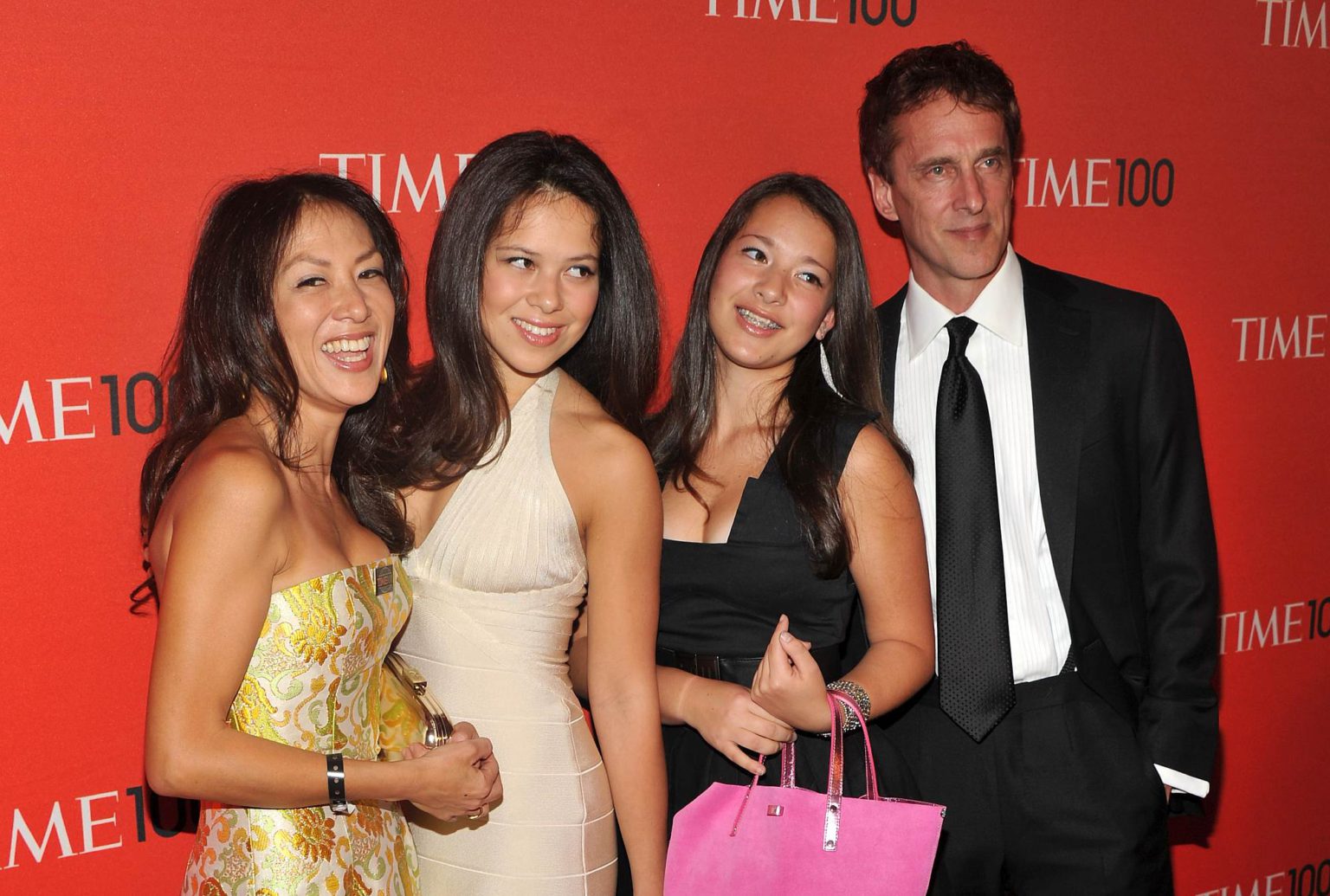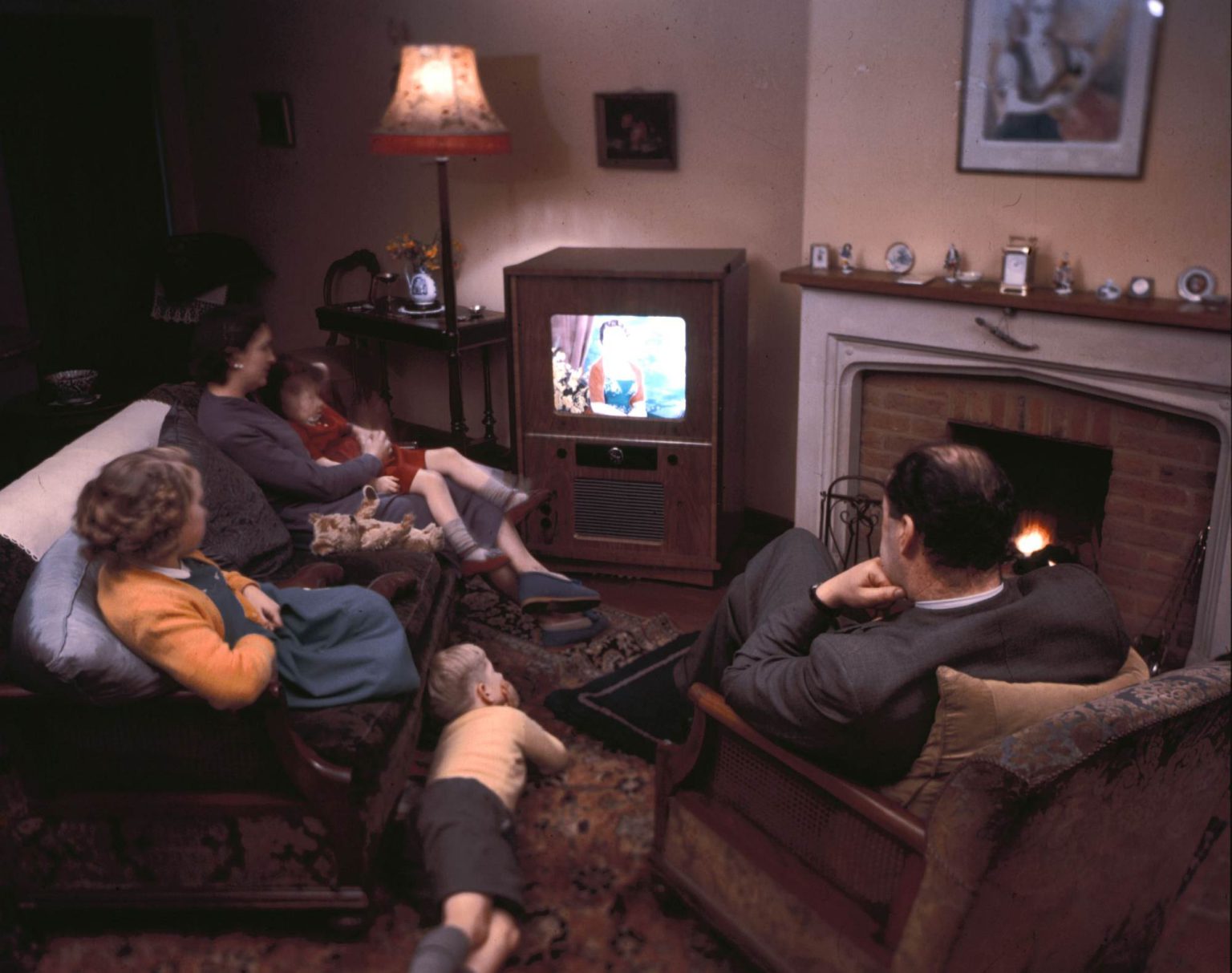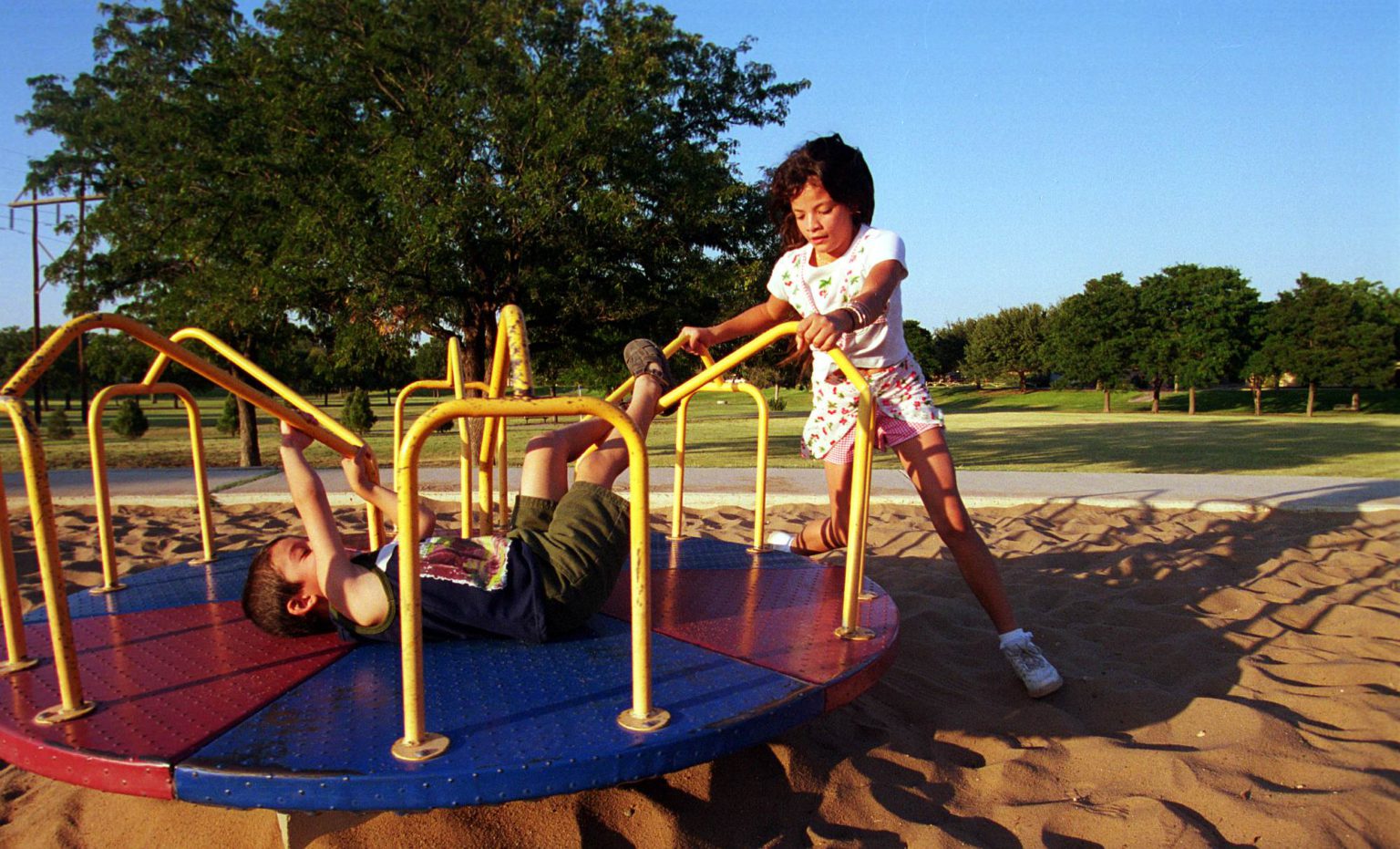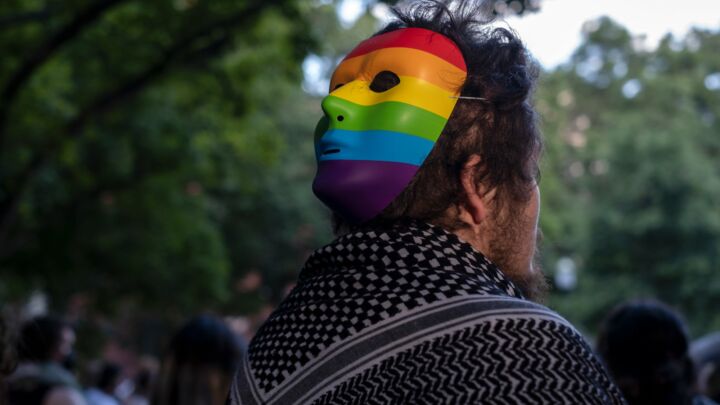
Long-read
Raising a fearful generation
Overprotected kids will become anxious and unfree adults.
Want to read spiked ad-free? Become a spiked supporter.
In this edited extract from Nancy McDermott’s new book, The Problem With Parenting: How Raising Children is Changing Across America, she explores the problem of so-called helicopter parenting, and looks at how we might once more provide children with the space and freedom they need to grow up.
When James Fay, one of the creators of the popular Love and Logic parent-education series, used the term ‘helicopter parent’ back in 1990, it was just one of several parenting styles. He also referred to ‘drill sergeants’ and ‘consultants’. ‘Helicopter parents’, he explained, were those who, like their namesakes, ‘make a lot of noise, a lot of racket. Helicopters hover, they protect and they rescue.’ (1)
Today the term ‘helicopter parent’ is ubiquitous. A Google search yields nearly half a million results. Its exact meaning is imprecise, however. It may be applied to parents of young adults or those with children of any age. It can be used as an insult, but it is also sometimes a compliment. It is considered bad for children or paradoxically good for them. Perhaps more interestingly, ‘helicopter parent’ has also evolved into an archetype that is less to do with parents’ relationship with their children than their obnoxious behaviour towards other people. The archetypal helicopter parent is pushy, overbearing, entitled and affluent.
As fluid as the idea is, it is usually understood in one of two ways. The first is as overprotection and risk-aversion and the second is pathological over-involvement. Both are considered dangerous to children’s social and emotional development.
Helicopter parenting as overprotection
Helicopter parenting is frequently characterised as extreme overprotection. In this scenario, parents exaggerate the assessment of risk, underestimate their child’s capabilities, and prevent their children from acquiring the experience they need to function as adults. Examples include the parents who micromanage their child’s play; the parents who refuse to let their child ride her bike beyond the driveway for fear she could be abducted; the parents who will not entrust their children with chores or who track their movements using Global Positioning System. Their children, like many of those described by Julie Lythcott-Haims in How to Raise an Adult or in Ben Sasse’s The Vanishing American Adult, are bright kids who, with no experience of solving practical problems independently, look to authorities to solve problems for them.
This is the form of ‘helicopter parenting’ most often counterpoised to so-called free-range parenting. It is also one that seems likely to lend itself to relatively straightforward solutions, such as debunking fears about stranger danger or abduction. This is the approach used by Lenore Skenazy in her book Free-Range Kids.
The second and somewhat more common understanding of ‘helicopter parent’ is as the overbearing, achievement-driven parent, who pushes her child to excel, on the one hand, while pressuring other people and institutions to adapt to her child’s requirements, on the other. Amy Chua, author of the book Battle Hymn of the Tiger Mother, is often held up as the quintessential helicopter parent because of her relentless efforts to push her daughters toward excellence.
This interventionist approach, sometimes referred to as ‘concerted cultivation’ or ‘hothousing’, is both reviled and admired. It seems to ensure that children will live up to their individual potential in areas like academics, sports and music but may be more about fulfilling parents’ ambitions than their children’s aspirations. Interventionist parenting seems associated with economic security and success, on the one hand, but also with higher levels of anxiety, depression, self-harm, substance abuse and psychological breakdown (2).
Little wonder, then, that helicopter parents are regarded with a mixture of pity and disgust. As Hara Estroff Marano, author of A Nation of Wimps, puts it, helicopter parents are ‘too entrenched in their fears to recognise the developmental needs of their children’ — ‘it’s time for parents to back off’ (3).
Helicopter parents as antiheroes
Today ‘helicopter parent’ has become more than a parenting style or a description of parents’ behaviour. It has become synonymous with moral deficiency – even when it is praised, as in the 2019 New York Times editorial entitled, ‘The bad news about helicopter parenting: it works’. Helicopter parents have become the antiheroes of the parenting world. They are ‘pushy and overbearing with teachers’; they are ‘obnoxious’; and they ‘spoil everything’. Their children are ‘incompetent, anxious, narcissistic and spoiled’; they are ‘selfish and entitled’; and they have ‘too many feelings’.
Sometimes helicopter parents are actually criminals.
The 2019 FBI operation ‘Varsity Blues’, a college admission scandal that resulted in the arrest and prosecution of 33 people, tapped into a rich vein of outrage. Wealthy parents had committed fraud and paid hundreds of thousands in bribes to ensure their children were awarded places at prestigious colleges. Headlines read ‘They had it coming!’, ‘”Varsity Blues” investigation lays bare ugly truths of American inequity’, and ‘The other atrocity in the college admissions scandal: bad parenting’. Most of the parents quoted in the press expressed their disgust, though at least one mother interviewed by NBC’s Today Show said what others were surely thinking: ‘They had the money and opportunity to help their kids. What parent wouldn’t?’ But bribery and fraud are relatively minor compared to some incidents.

In 2007, in an incident Judith Warner described as ‘When helicopter parenting turns deadly’, a 13-year-old girl in Dardenne Prairie, Missouri, committed suicide after an online boyfriend, Josh, spurned her. ‘Josh’ turned out to be a 47-year-old mother seeking revenge after the girl hurt her daughter’s feelings. In another incident, a Californian mother, enraged because her six-year-old son was made to wait briefly outside the locked side door of the school building after tennis lessons, conspired with her husband to plant illegal drugs in the car of the tennis instructor (also the mother of a child at the school).
There have always been parents who have gone to extremes to secure advantages for their children, but the promise of social mobility and meritocracy seemed to counterbalance the selfish impulses of individuals. But no more. ‘Helicopter parents’ as a group seem to embody the perceived selfishness eating away at the heart of the American dream.
Free-Range Kids
One April Sunday in 2008, Lenore Skenazy, a journalist for the New York Sun, left her son, Izzy, in the ladies’ handbags department of Bloomingdales in Manhattan. After months of pestering, the almost 10-year-old had finally convinced his parents to leave him someplace in the city and let him find his own way back home. Skenazy handed him a subway map, a metro card, $20, and change for the phone, and dismissed him with the words, ‘Bye Bye! Have fun!’, then turned and strolled out of the store. Forty-five minutes later, he arrived at home beaming with pride and independence.
That might have been the end of it, but Skenazy decided to write about the reaction she got from friends and family in her column. ‘Half the people I’ve told this episode to now want to turn me in for child abuse’, she wrote. ‘As if keeping kids under lock and key and helmet and cell phone and nanny and surveillance is the right way to rear kids. It’s not. It’s debilitating – for us and for them.’ The day after the piece was published, her phone rang. Producers from NBC’s Today Show wanted to know if she and Izzy would care to come on the show to explain themselves.
The show felt like a set-up. The Today Show’s producers had invited along Dr Ruth Peters, their resident parenting expert, to act as the voice of sanity to counter Skenazy’s unhinged childrearing. Peters adopted an incredulous tone to express her deep concern and explained v-e-r-y slowly and deliberately that there were much safer and more ‘appropriate’ ways Skenazy could have given Izzy the same experience. He could, she suggested, have gone along with a group of friends or she might have followed him at a distance to make sure he was safe. The presenter Ann Curry nodded along sagely. At that point, Skenazy might have gone along and played her part as the well-meaning but naive parent. But she didn’t. She stood her ground. ‘The same experience is going on a subway and that is safe’, she insisted. ‘It is safe to go on the subway!’
Within hours Skenazy found herself at the centre of an international media frenzy. The media dubbed her, ‘America’s worst mom’. News organisations from England to China wanted to talk to her. America split between those who supported her and those who thought she ought to be locked up. Strangers from all over the country and across the world wrote to accuse her of neglect. Even more wrote to express their support. ‘It was kind of fun, but also kind of terrifying – because everyone was weighing in on my parenting skills’, Skenazy told me in 2008.
Skenazy’s story, her book Free-Range Kids and her blog of the same name gave focus to the simmering disaffection that many parents and grandparents felt with the extreme risk-aversion of modern-day childrearing. It helped to amplify half-buried suspicions that protection had gone too far and that children were worse off for it. They were delighted that, at last, someone was speaking up.
The idea of free-range kids not only touched a nerve then — it also continues to endure today. Why did free-range kids persist when many other critiques of helicopter parenting became background noise? In retrospect, 2008 was one of those pivotal moments when the right person is in the right place at the right time. When the New York Sun closed down that year, Skenazy, who really did care about allowing children the freedom to grow up, made free-range kids her job and vocation. It was a little daunting to find herself at the head of a nascent movement, and standing up against the received wisdom about children and safety, but Skenazy had several things working in her favour.
The struggle to become a movement
One of the most important elements in the initial success of free-range kids was the Free-Range Kids blog. The blog was unique because unlike most other critics of helicopter parenting, Skenazy didn’t blame parents for overprotecting their kids. She tried to help them. The blog became a place where aspiring free-rangers could share their success stories and frustrations or report what was going on in their neck of the woods. Sometimes the moral support of a friendly blog post or the encouragement of fellow readers made all the difference. It also helped bring the wisdom of the crowd to bear on the practical difficulties of bucking the trends. What, for instance, should parents do about the Bad Samaritans who delighted in accosting their children demanding to know where their parents were? The Free-Range Kid card was one idea. The cards, which could be downloaded from the blog, bore the parent’s signature and telephone number along with the words:
‘I am NOT lost. I’m a free-range kid! I have been taught how to cross the street safely. I know never to go off with strangers, but I can talk to them. I like being outside and exploring the world. If you are a grown-up, you probably did the same things when you were a kid, so please do not be alarmed. The adults in my life know where I am, but if you want to talk to them, feel free to give them a call.’
If the card was not a complete solution, it made it clear that kids were ready and able to be on the bus or in the park with the full knowledge and blessing of the adults in their lives.
The second thing working in Skenazy’s favour was her notoriety. Being ‘America’s worst mom’ opened a surprising number of doors. It allowed her to launch and publicise initiatives like Take Our Children to the Park and Leave Them There Day (2010) and to host World’s Worst Mom, a reality-TV show on Discovery Life in which she helped extremely overprotective parents (like the mom who insisted on making her 12-year-old son use the ladies room with her) to let go. She wrote op-eds and used every opportunity to debunk myths about the prevalence of child abduction and crime statistics. She was a tireless fighter against the scourge of baby knee pads. She pioneered the Free-Range Kids school project, which succeeded in successfully overturning norms in some communities. She lobbied for a Free-Range Kids law (first passed in Utah in 2018) that removes the threat of prosecution from parents who permit ‘a child, whose basic needs are met and who is of sufficient age and maturity to avoid harm or unreasonable risk of harm, to engage in independent activities’.

The work done to promote the idea of free-range kids, the forces preventing parents from challenging the climate of extreme caution became clear. It wasn’t enough simply to debunk myths about stranger danger, crime or child abduction, or to point out that children are statistically more likely to be hurt in a parking lot than being left waiting unattended in a car for 15 minutes. Progress in getting people to agree in principle raised practical problems. For instance, even if parents agreed to let their kids walk or ride their bikes to school, how could they do so safely in towns with busy roads and no sidewalks? Or how could they let their kids ride their bike to school when they needed to cross the highway and there is no route across?
Solving these problems requires time and perseverance, but they are at least subject to specific solutions, even if it takes time to find out what those solutions might be. The more daunting challenge and the one least open to simple practical answers is the problem of Bad Samaritans.
A Question of Morals
In September 2016, 20-year-old Breanna McGrath left her baby in her car for three minutes outside the Gas Express in New Bedford, Massachusetts, while she went in to make a purchase. Bryan Amaral, the man parked next to her, did what people increasingly do: he filmed her car, her baby and her license plate, and then berated her when she returned. Then he posted the video to Facebook where it received 2.5million views. The police and Family and Child Services were alerted and McGrath found herself facing charges of reckless endangerment and the possibility of losing custody of her child. When Amaral learned what happened to McGrath, he was dismayed. He insisted that he never intended for things to go as far as they did. Rather, he hoped ‘someone close to her would see it and talk some sense’. By that point, it was too late.
Incidents like these have become all too common. In 2011, the writer Kim Brooks was reported to police by an anonymous stranger for leaving her son playing video games for five minutes in the car while on vacation in Virginia. In 2014, Debra Harrell of Augusta, South Carolina, was arrested after she allowed her daughter to play at the park while she finished her shift at McDonald’s. In 2015, in Washington, DC, Alexander and Danielle Meitiv were charged with neglect because a neighbour reported them for allowing their children to walk home from the park by themselves.
In each of these situations, a stranger took it upon themselves to sanction parents. But why? The children were not in imminent danger. In most cases they were not even violating the law – allowing children to wait in the car isn’t illegal in most states. The most likely reason for strangers to take out their phones to film the errant parent or to summon the police is because they feel they are doing something morally right.
Barbara W Sarnecka and her colleagues at the University of California, Irvine, have looked at how people react to unattended children. They conducted a study in which they presented participants with a number of scenarios in which a child is left unattended for a time – sleeping in a car in a gym’s underground parking garage for 15 minutes, for example. The researchers then asked them to estimate how much danger the child was in. In addition to this basic information, some participants were also given the reason for the parent’s absence. The researchers found that children in the same situations were perceived to be in more danger depending on the reason why the child had been left alone. A child left alone inadvertently, for instance, because the parent met with an accident, were judged to be in less danger than a child left alone intentionally so that the parent could relax or meet a lover.
But interestingly, when researchers asked questions about the morality of leaving children alone, they found that participants thought that it was wrong to leave a child unattended for any reason across the board, but judged parents only slightly less harshly if they left them alone unintentionally. The conclusion Sarnecka and her colleagues came to was that people don’t only think that leaving children alone is dangerous and therefore immoral. They also think that it is immoral and therefore dangerous.
This has important implications for aspiring free-rangers. Challenging the norm of constant supervision will take more than simply changing minds with data. It will take changing hearts.
Helicopter parents versus free-range kids
‘Helicopter parent’ is a terrible term. Its meaning constantly shifts. It can mean overprotective, over-involved, or just plain obnoxious. So why has it become the label for all things bad about contemporary childrearing?
There is something in the image of a parent hovering over a child that strikes a chord. It appeals to our intuition, not just because it depicts behaviour we observe all the time, but because it captures the essence of the new relationship between parents and children. Parents no longer facilitate their children’s progress towards full autonomy and integration into the adult world. By inculcating themselves into their child’s socialisation, they are preventing it.
Why parents hover
All childrearing is ultimately about socialisation. The precise relationship between the actors involved varies depending on the nature of the society. In some societies, family members play an outsized role. In others, raising children literally requires a village of people who see socialising children as a communal and generational task. One of the most important cultural achievements of the modern era was the evolution of the institution of the family into one that was able to balance the flourishing of the individual with the needs of society. The bourgeois family produced individuals who were sophisticated enough, thanks to the protracted and protected period of education we call childhood, and flexible enough, by virtue of the space for reflection and contemplation it provided, to meet the challenges of the modern era. It played this role simply through its existence and did its job in subtle but powerful ways.
The bourgeois family was comprised of an exquisitely complex web of relationships: parents’ relationship to one another; the relationship between individual parents and individual children; children’s relationships with each sibling and to their siblings as a group; each parent’s relationship with their children as a group; and the relationship between the members of one sex and another. Family acted as a microcosm of society, reflecting its norms and values in a unique and intimate way. It was flexible enough to balance the different needs of different family members and robust enough to contain a great deal of conflict and emotion without threatening the overall integrity of the institution.

The family acted as a base from which children could explore the wider world. Family life was the cipher through which they made sense of their experiences. Parents might help their children explicitly or implicitly depending on the situation but so might other family members, such as older siblings. When the bourgeois family declined in the 1970s, Parenting, as a verb and a phenomenon, stepped into the breach.
Not only did families after the 1970s look somewhat different to the family of the past, they also behaved differently. Beyond traditional families, there were single-parent families, second families and blended families. They were the products of formal commitments, private commitments, or sometimes no commitments at all. They were families based on emotion and dedicated to nurturing the self. At the time and still today, this kind of family was viewed as more authentic and therefore superior to the bourgeois family. The couple at the core of the relationship set the tone for the family as a whole. When they were happy, it was assumed that other family members would ultimately be happier too. In practice, the divorce revolution shook families to their core. It became so common by 1970 (about half of marriages at the time ended in divorce) that it undermined the institution itself. Parents hoped that the parent-child relationship would be emotionally strong enough to weather divorce and possible remarriage and integration into a new family.
The instability of the family meant that childrearing became implicitly less dedicated to creating a protected space for children. How could it be when so many families broke up as couples went their separate ways? The singularly permanent relationship between parent and child acted as a sort of bulwark against hard times and childrearing began self-consciously to focus on preparing children for the realities of adult life. It was in this way that parents began to insinuate themselves into the process of socialisation in a new and unhelpful way.
Just as parents based their commitment to their partners on emotional fulfillment, so too they strove to make sure that their children were emotionally fulfilled in their relationships in the family and beyond. They wanted their children to be free to be their authentic selves, unfettered by the pressure to conform or of other people’s definitions of success, and safe from the pernicious effects of negative emotions associated with rejection. They wanted their children’s experience to be fundamentally positive and affirming. This is how they became positioned as curators of their children’s life experience.
Parents’ hovering behaviour is driven by the need to play this mediating role. It happens because there is very little in childrearing and life that is certain beyond parents’ attention, their control and their emotional commitment. This is why calls for helicopter parents to ‘back off’ can never hope to be successful. And this is also one of the most serious challenges for the free-range kids movement.
The opposite of helicopter parenting
On a balmy September Friday afternoon in Brooklyn’s Prospect Park, a group of about six or seven mothers have come to listen to Lenore Skenazy talk about raising independent kids. The ‘kids’ are still babies, one just a few weeks old. There’s also a free-range dad whose gender-neutral kiddo runs around the open field adjacent to the play area under the nervous gaze of other adults who haven’t yet figured out that the dad is watching him from the corner of his eye.
They have come for different reasons. Some, those who grew up in the suburbs or the countryside, are worried about how life in the city will affect their child’s ability to roam. Others want to know how to respond to the behaviour of parents around them, such as the couple who told their nanny that their child must only sleep in rooms between 70 and 74 degrees Fahrenheit. They all want to know what they need to do to raise free-range kids.
For parents of children this young, the answer to the question ‘What do I need to do?’ is deceptively simple: do nothing. That is, let your children play with other kids and don’t intervene too much. But even this is not simple. It means finding parents who feel the same way, who will agree to stay on the sidelines and who will support one another when the Bad Samaritans of the sandbox demand that they intervene because the kids are arguing over the toy backhoe. Those of us with older kids know that doing ‘nothing’ becomes infinitely more difficult as children grow up and we start to know them better. There comes a point where we know them too well, enough to believe we foresee the challenges they face laid out before us like a deck of cards. It would be simple enough just to pick them up and play the winning hand.
This is the dilemma posed by helicopter parenting and free-range parenting. As long as parents occupy the position between their children and the world, it is too tempting to intervene. After all, what sort of parent would allow their child to suffer needlessly? And what injuries will the world inflict? Already the parents in the park are worried. Gender-neutral dad fears the impact of gender stereotypes. One of the moms describes herself as suffering from anxiety and hopes that raising her daughter ‘free-range’ will protect her from the same. The stakes seem so high. But there is an inherent danger that focusing too much on what parents do threatens to make free-range parenting into just another version of hovering – albeit over activities curated to engender independence. The opposite of helicopter parenting is not free-range parenting. It is not Parenting at all.
The Free-Range Kids movement is the most powerful challenge to the new norms of Parenting so far. It does this most successfully when it takes the question of what children need to grow into competent, resilient and independent adults out of the realm of parenting and into the wider realm of the community. This doesn’t mean that free-range parenting is futile, or that there is no place for the moral and practical question of what parents should do. On the contrary, it is far better for parents to err on the side of respecting their child’s emerging autonomy than to give into the temptation to manage their lives for them. Even if it really were possible to ensure their safety and success, by delivering them into the ideal college, the ideal job and the ideal life, it is not desirable. The paths we take when we are young seldom lead us where we think.
We take detours and make mistakes along the way. Parents hope to help their children avoid the mistakes and missteps they made. But it is through making that a less-than-ideal journey that they will make their children stronger, smarter and wiser. All parents want to help their children lead a good life, but a life lived in the shadow of a hovering protector is not a good life for children – or their parents.
Nancy McDermott is a writer based in New York. Her new book The Problem with Parenting: How Raising Children Is Changing Across America is published by Praeger. (Buy this book from Amazon(UK).)
All pictures by: Getty
(1) Helicopters, Drill Sergeants, and Consultants: Parenting Styles and the Messages They Send, by Jim Fay. Golden, Love and Logic Press, 1994, p17
(2) ‘Helping or Hovering? The Effects of Helicopter Parenting on College Students’ Well-Being’, by HH Shirffin et al, in Journal of Child and Family Studies 23 (2014), pp 548–57
(3) A Nation of Wimps: The High Cost of Invasive Parenting, by HE Marano, Broadway Books, 2008, p255
Celebrate 25 years of spiked!
A media ecosystem dominated by a handful of billionaire owners, bad actors spreading disinformation online and the rich and powerful trying to stop us publishing stories. But we have you on our side. help to fund our journalism and those who choose All-access digital enjoy exclusive extras:
- Unlimited articles in our app and ad-free reading on all devices
- Exclusive newsletter and far fewer asks for support
- Full access to the Guardian Feast app
If you can, please support us on a monthly basis and make a big impact in support of open, independent journalism. Thank you.







Comments
Want to join the conversation?
Only spiked supporters and patrons, who donate regularly to us, can comment on our articles.